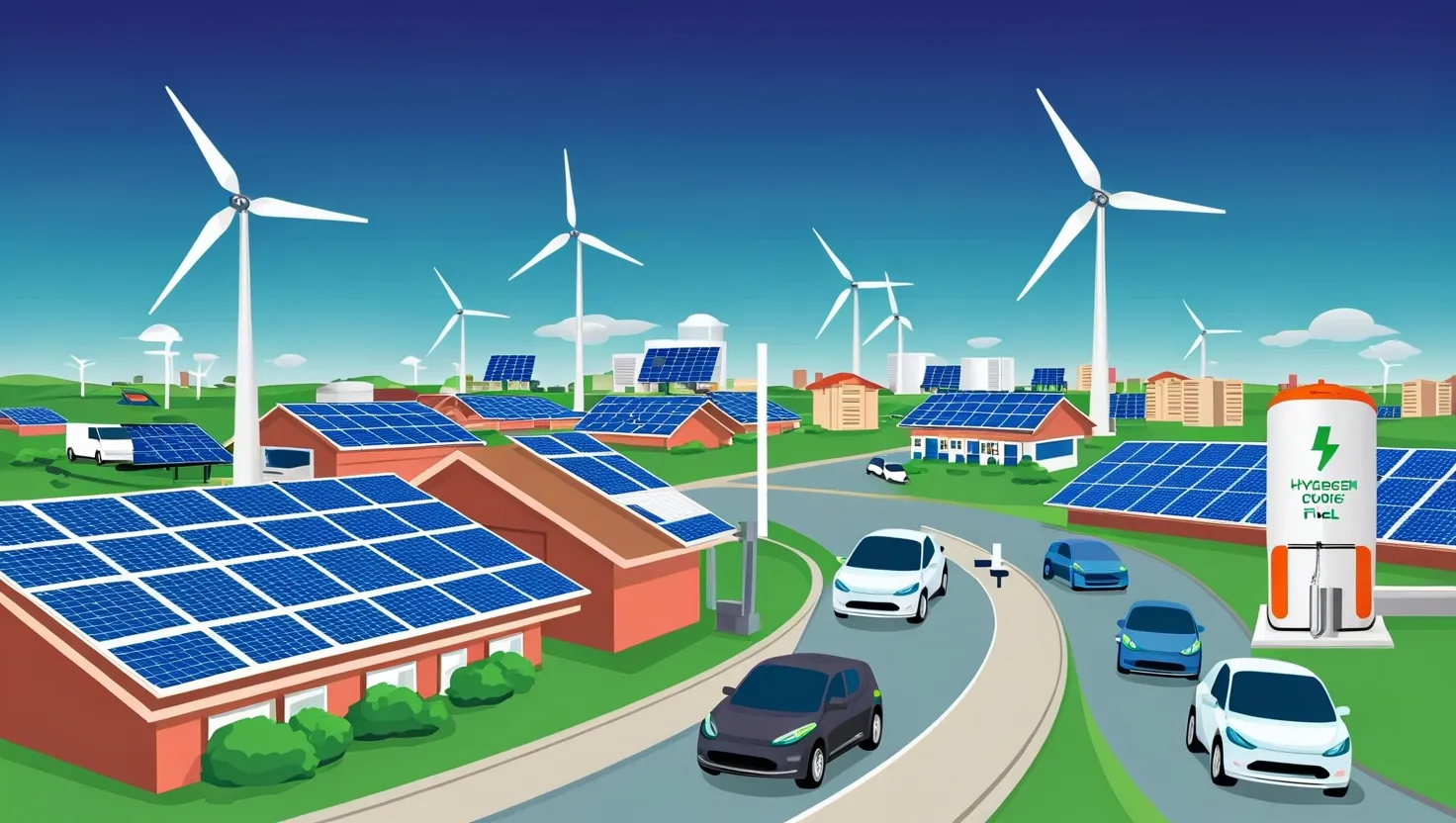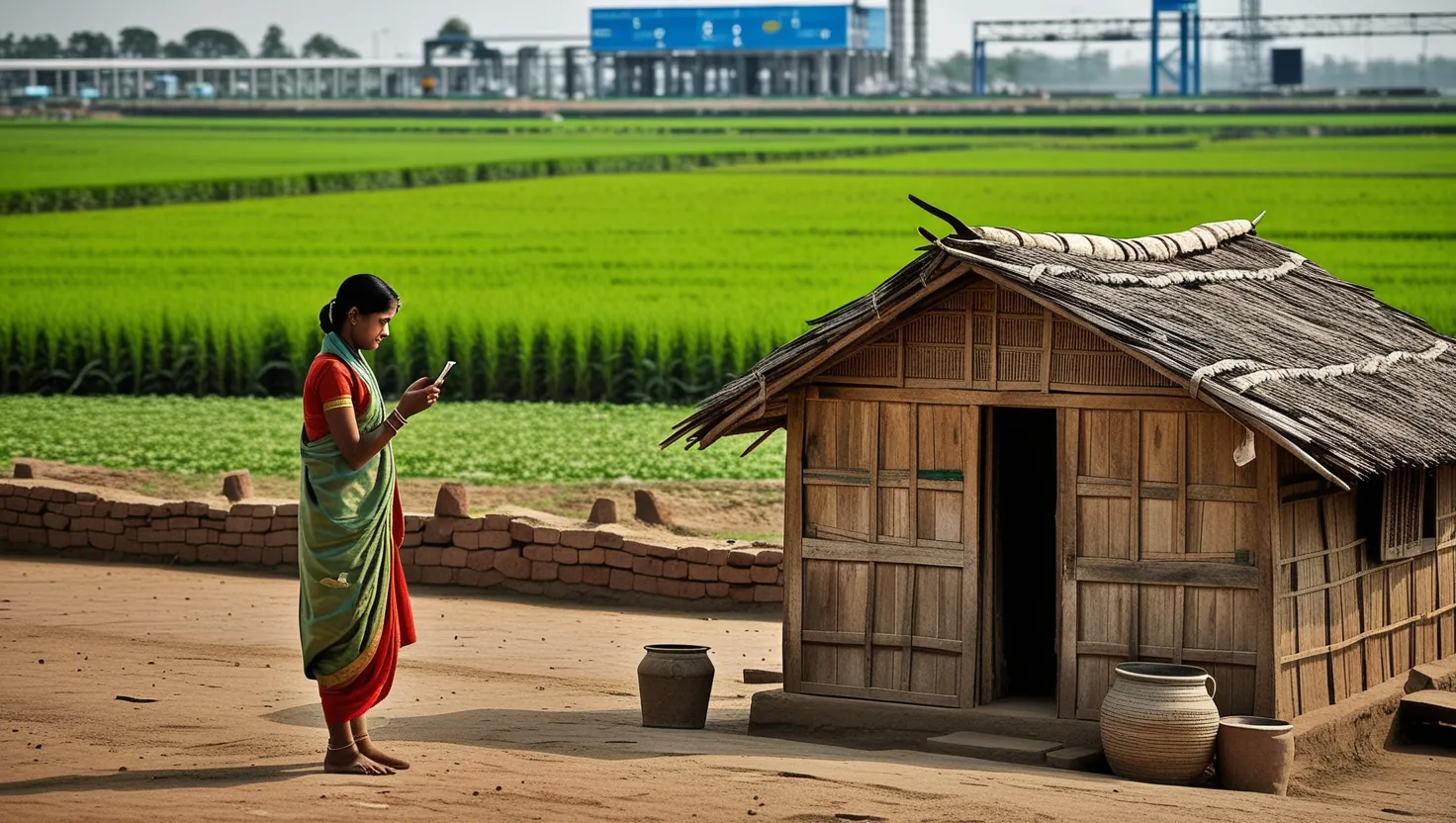As I reflect on the transformative journey of India’s energy sector, it’s clear that the country is at a pivotal moment in its history. The push towards a sustainable future is not just a necessity, but a defining characteristic of India’s growth trajectory. Here are five key energy sector reforms that are powering this transition.
The Rise of Renewable Energy
India’s commitment to renewable energy is nothing short of remarkable. The country has set an ambitious target of achieving 500 GW of installed renewable energy capacity by 2030. This goal is not just a number; it represents a seismic shift in the power generation mix. Renewable energy now accounts for over 46% of India’s total installed capacity, a figure that was unimaginable just a decade ago.
“As we move forward, we must recognize that the old way of doing things is no longer viable. We need to embrace new technologies and new ways of thinking,” a sentiment echoed by many in the industry.
The growth in renewable energy is driven by a diverse array of sources, including solar, wind, hydro, and bioenergy. Solar power, in particular, has seen a dramatic increase, with ground-mounted installations leading the charge. This transition is not only reducing India’s reliance on fossil fuels but also strengthening the nation’s energy security.
Green Hydrogen: The Future of Clean Transportation
One of the most exciting developments in India’s energy landscape is the Green Hydrogen Mission. This initiative aims to harness hydrogen as a clean energy carrier, particularly in the transportation sector. Green hydrogen, produced from renewable energy sources, has the potential to revolutionize how we think about fuel.
“Hydrogen is the simplest and most abundant element in the universe, yet it holds the key to our energy future,” notes a leading energy expert.
The mission is part of a broader strategy to decarbonize industries and transportation. By promoting green hydrogen, India is not only reducing its carbon footprint but also creating new opportunities for clean energy jobs and economic growth.
Power Sector Reforms: Efficiency and Loss Reduction
The power sector in India has long been plagued by inefficiencies and significant transmission and distribution losses. However, recent reforms are aimed at addressing these issues head-on. The focus is on improving the financial health of electricity distribution companies and implementing smart grid technologies to reduce losses.
“How can we ensure that the energy we produce is the energy we use?” This question is at the heart of India’s power sector reforms.
These reforms include measures to enhance billing and collection efficiency, reduce aggregate technical and commercial losses, and promote private sector participation. The goal is to create a more robust and efficient power distribution system that supports the growing demand for electricity.
Energy Efficiency Initiatives
Energy efficiency is another critical area where India is making significant strides. Initiatives aimed at industries and buildings are designed to reduce energy consumption without compromising on productivity or comfort.
“Energy efficiency is not just about saving energy; it’s about creating a sustainable future,” says an industry insider.
Programs such as the Perform, Achieve, and Trade (PAT) scheme for industries and the Energy Conservation Building Code (ECBC) for buildings are driving this change. These initiatives encourage the adoption of energy-efficient technologies and practices, leading to substantial reductions in energy consumption.
Nuclear Power Expansion and Safety
Nuclear power is another vital component of India’s energy mix. The country is expanding its nuclear power capacity, with a focus on both generation and safety. The addition of new nuclear reactors and the enhancement of existing ones are part of a broader strategy to ensure a reliable and clean energy supply.
“Nuclear power is a zero-carbon source of energy that can help us meet our climate commitments,” emphasizes a nuclear energy expert.
Safety remains a top priority, with stringent measures in place to ensure the highest standards of nuclear safety and security. This includes advanced reactor designs, robust regulatory frameworks, and continuous training for personnel.
Implementation Challenges and Technological Advancements
While these reforms are promising, they are not without their challenges. One of the significant hurdles is the financial requirement; achieving these targets will necessitate massive investments, estimated to be in the range of $6-8 trillion between 2015 and 2030.
“How do we finance this transition?” This is a question that policymakers and industry leaders are grappling with.
Technological advancements are also crucial. Innovations in energy storage, smart grids, and renewable energy technologies are driving the transition. However, these advancements must be accompanied by supportive policies and regulatory frameworks to ensure their widespread adoption.
The Potential Impact
The impact of these reforms on India’s energy independence and climate commitments cannot be overstated. By reducing reliance on fossil fuels, India is enhancing its energy security and mitigating the risks associated with volatile commodity prices.
“We are not just building an energy system; we are building a sustainable future,” says a government official.
These reforms are also creating new job opportunities in the clean energy sector, contributing to economic growth and improving the quality of life for millions of Indians. As India moves forward on this path, it is poised to emerge as a global leader in renewable energy, setting an example for other emerging economies.
A Holistic Approach
The energy transition in India is not just about policy changes; it’s about a holistic approach that considers the well-being of all stakeholders. It involves creating the right conditions for sustainable economic growth, ensuring that communities dependent on fossil fuel industries are supported during the transition.
“The transition to a sustainable energy future is not just a technical challenge; it’s a social and economic one,” notes an expert.
This approach requires collective action from governments, industries, and civil society. It demands a commitment to knowledge sharing, policy coordination, and financial support to bridge the gaps in the energy transition space.
As India continues on this journey, it is clear that the future is bright, but it is also fraught with challenges. However, with determination, innovation, and a collective effort, India can achieve its ambitious energy targets and create a sustainable future for generations to come.
“Believe you can and you’re halfway there,” as Theodore Roosevelt once said. India’s energy sector reforms are a testament to this belief, and the journey ahead promises to be nothing short of extraordinary.






